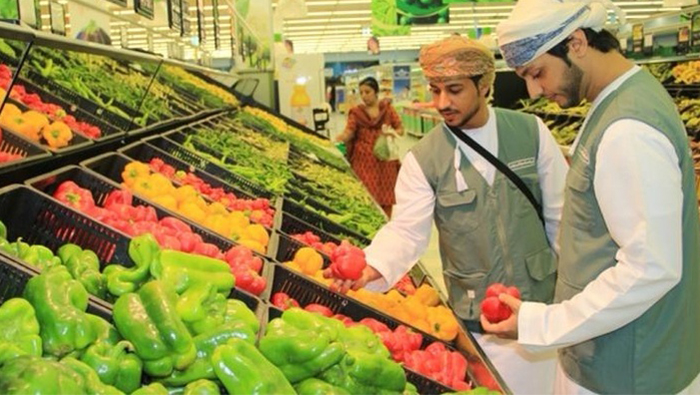The inflation rate in Oman has increased by 0.4 percent in April 2024 compared to the same month in 2023, according to data on consumer price index (CPI) numbers in the Sultanate of Oman issued by the National Centre for Statistics and Information (NCSI). The NCSI data indicated an increase in the prices of various personal goods and services groups by 4.2 percent, food and non-alcoholic beverages by 2.8 percent, tobacco by 2.4 percent, culture and entertainment by 0.4 percent, the restaurants and hotels group by 0.3 percent, and the clothing and footwear group by 0.2 percent. On the other hand, the prices of the transportation groups decreased by 3 percent, education by 0.4 percent, furniture, household supplies and equipment, and regular home maintenance by 0.2 percent, and communications by 0.2 percent, while the prices of the remaining groups remained stable.
In the food and non-alcoholic beverages group, the prices of vegetables increased by 12.1 percent, fruits by 4.2 percent, milk, cheese, and eggs by 3.7 percent, oils and fats by 2.7 percent, meat by 1.9 percent, sugar, jam, honey, and sweets by 1.4 percent, and bread and cereals by 1 percent, while fish decreased by 2.4 percent. North Al Sharqiyah Governorate recorded the highest rate of increase in inflation at the end of April 2024 compared to the same period of the previous year, as the index rose by 1.4 percent, while it rose by 1.3 percent in the Al Wusta Governorate and by 1.1 percent in the Dhofar Governorate. The inflation rate increased by 1 percent in Musandam Governorate, by 0.9 percent in South Al Sharqiyah Governorate, by 0.7 percent in Buraimi and North Al Batinah Governorates, by 0.6 percent in Al Dhahirah Governorate, and by 0.2 percent in Al Dakhiliyah Governorate, while the inflation rate stabilised in Muscat Governorate.
The increase in the inflation rate in Oman can be attributed to various factors such as rising prices of personal goods and services, food and non-alcoholic beverages, and tobacco. These price increases have put pressure on the overall consumer price index, leading to a rise in inflation. It is important for policymakers and stakeholders to closely monitor these price movements and take necessary measures to mitigate the impact of inflation on the economy.
The rise in vegetable prices by 12.1 percent, fruits by 4.2 percent, and other essential food items has contributed to the overall increase in the inflation rate. This indicates challenges in the food supply chain and the need for intervention to ensure food security and affordability for consumers. The decreasing prices of fish by 2.4 percent, however, provide some relief in terms of food inflation, but overall, the food and beverage group has seen a notable increase in prices.
The regional variations in inflation rates across different governorates highlight the uneven impact of rising prices on consumers in Oman. While some areas like North Al Sharqiyah Governorate have experienced a significant increase in inflation, others like Muscat Governorate have seen a stabilisation in prices. These regional disparities underscore the need for targeted policies and interventions to address the specific challenges faced by different areas in the country.
Overall, the inflationary pressures in Oman underscore the importance of sound economic policies and measures to manage price stability and ensure sustainable economic growth. It is crucial for policymakers to address the root causes of inflation and implement measures to mitigate its impact on consumers and businesses. By closely monitoring price movements and taking proactive steps to address inflationary pressures, Oman can maintain economic stability and promote long-term prosperity for its citizens.











